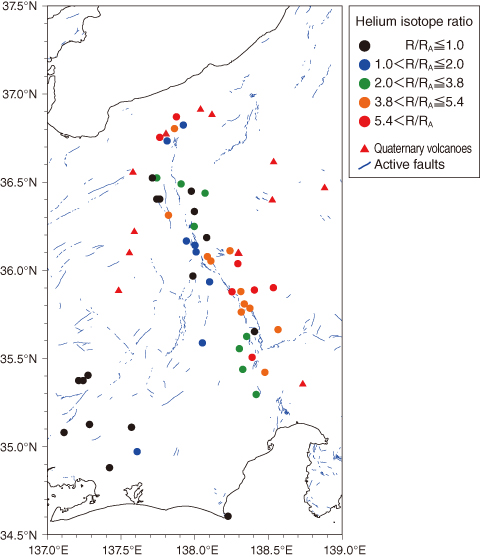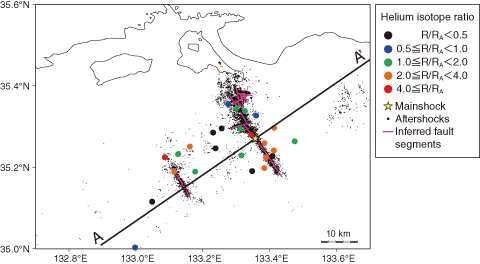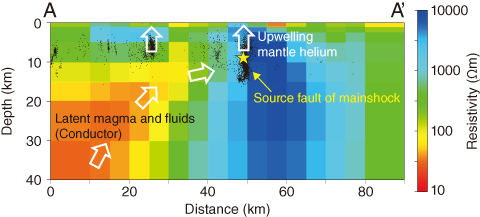
Fig.8-22 Geographical distribution of helium isotope ratios around the Itoigawa-Shizuoka tectonic line

Fig.8-23 Geographical distribution of helium isotope ratios in aftershock area of 2000 western Tottori earthquake

Fig.8-24 Electrical resistivity structure beneath aftershock area of 2000 western Tottori earthquake
Earthquake faulting is one of the most important factors affecting the long-term stability of a geological disposal system, because it could cause a dynamic destruction of basement rocks. Recently, some large earthquakes with no noticeable surface expression of earthquake faulting have occurred, implying the existence of concealed active faults. Therefore, we developed a geochemical approach based on helium isotopes to detect concealed active faults.
The helium isotope ratios (3He/4He) observed in volcanic regions are usually similar to those of mantle-derived helium, which is several times higher than atmospheric value. These ratios should allow us to determine migration pathways, such as active faults, from the subcrustal mantle. We mapped the distribution of the helium isotope ratio around the active faults of the Itoigawa-Shizuoka tectonic line (ISTL) and of the seismic source region of the western Tottori earthquake by using helium isotope data from groundwater samples from hot springs and drinking water wells.
The spatial variation of the helium isotope ratio along the ISTL revealed that there is a high helium isotope ratio that occurs along the active faults (Fig.8-22), which can be interpreted as the leakage of mantle helium within the crust migrating upward through active faults.
An inland earthquake (M 7.3) occurred in the western Tottori in 2000 where no active fault was related to the earthquake. Groundwater samples collected in the aftershock area are characterized by helium isotope ratios several times higher than the atmospheric value. The helium isotope ratios decrease with distance from the inferred fault segments (Fig.8-23). In addition, magnetotelluric soundings were taken in the aftershock area in order to image subsurface electrical resistivity structure and detected an anomalous conductive body, which may be attributed to latent magma and related fluids, on the southwestern side of the source fault (Fig.8-24). These findings indicate mantle helium leaking from latent magma through the concealed faults. Moreover, the upwelling of fluids to the crust could contribute to triggering a large earthquake by weakening the shear strength of the source fault.